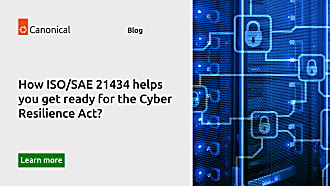Bertrand Boisseau
on 12 July 2024
Managing OTA and telemetry in always-connected fleets
If you’ve been reading my blogs for the past two years, you know that the automotive industry is probably the most innovative one today. As a matter of fact, some of the biggest company valuations revolve around electric vehicles (EVs), autonomous driving (AD) and artificial intelligence (AI). As with any revolution, this one comes with its set of challenges.
I’ve noticed that the most difficult technologies to grasp and master aren’t always the ones that seem the most complex at first sight. Over-the-air (OTA) updates and managing the telemetry of a fleet are typically some of the most promising, but also deceptively complicated, technologies in automotive today.
The unspoken power of OTA
Over the air updates have the potential to completely reshuffle the cards when it comes to the value of a vehicle. By enabling remote software and firmware updates, OTA updates not only eliminate the need for physical intervention, but also provide security updates, as well as new features, making your car feel brand new. When applied throughout an entire fleet, you can imagine the savings, but also the value that is added to vehicles driving on the road today.

By minimizing the need for vehicles to be taken to dealerships or garages for updates and maintenance, OTA updates ensure higher availability of vehicles. Similarly, by adding new features and improvements to your vehicles, you enhance the overall user experience.
You’ve probably heard of new cybersecurity automotive regulatory requirements that OEMs need to comply with, like ISO 21434. OTA updates can help OEMs meet these regulatory requirements, by remotely ensuring that vehicles have the latest and greatest security patches against vulnerabilities and cybersecurity threats.
At Canonical, we believe that one of the most effective ways to manage OTA updates is through the use of a Dedicated Snap Store. These provide a centralised platform for distributing and managing your software packages, while keeping the whole process secure. Being a single point of control for your software updates, it makes it easier to manage and employ these packages across your fleet.
For example, an OEM could use a Snap Store to manage updates for various car models, and versions. Allowing for precise control over which updates are deployed to which variant, so that each vehicle receives the necessary updates for its specific configuration.
All of these updates follow very strict security guidelines, ensuring that only authorised packages are delivered to your vehicles. By using delta mechanisms, you can optimise your download sizes and update times, which is especially useful for large fleets.
Telemetry for enhanced efficiency
Telemetry involves the collection of data coming from vehicles. This data can be used for improving the vehicles themselves, fleet operations, efficiency, etc. With fine-tuned, telemetry parameters, you can obtain relevant data at the right frequency to optimise analytics.
Whether you want to track vehicle location, speed, fuel consumption, or ECU diagnostics, you want to make sure that you are monitoring your fleet with best-in-class performance. One of the most common use cases that justify the investment in feet telemetry is predictive maintenance. By analysing data from your fleet, you can predict the need for repairs and schedule proactively for maintenance. This helps you reduce the downtime of your fleet, and enables you to extend the lifetime of your vehicles.

A different use case relies on driver behaviour monitoring. Although this use case is often frowned upon, from an insurance company perspective it can provide a lot of value. From more accurate premiums based on your actual vehicle usage and driving behaviour, analysing this data can lead to potential cost savings.
Yet another use case that is frequently mentioned when it comes to fleet management is route optimisation. By combining traffic information and geolocation data, it becomes possible to find highly optimised routes; reducing travel time and fuel consumption.
From interoperability to security, managing a large fleet of vehicles comes with its challenges. In fact, integrating data generated by very diverse systems and components from different OEMs can be extremely challenging. It’s important that your solutions abstract that complexity and ensure seamless communication and data exchange.
Cybersecurity wise, having vehicles constantly connected means that the cybersecurity threats can happen anytime. Security needs to be applied from the ground up; from the vehicles to the cloud. Moreover, your backend will sometimes be handling confidential information. The way you decide to collect, store and analyse these large amounts of data requires advanced frameworks and tools.

Open source solutions offer several advantages for fleet management, including scalability, security, and interoperability. Community-driven development offers continuous improvements and optimisations, while transparent development processes can further improve security and flexibility.
Driving towards excellence by future-proofing fleet management
The automotive industry’s shift to software-driven operations necessitates a deep understanding of interconnected systems. OTA updates and fleet telemetry are at the front lines of this transformation, offering substantial benefits in terms of efficiency, security, and operational excellence.
By taking advantage of Dedicated Snap Stores, edge computing, and open source solutions, automotive companies can embrace these challenges with confidence, benefiting from the full potential of open source software.
As the industry opens up to this software revolution, stakeholders must understand the intricacies of these complex systems. Failure to do so could lead to compromised security. Our latest white paper aims to address this knowledge gap and empower you to understand the full scope of the possible existing solutions.
If you want to learn more about achieving effective V2X communication, understanding OTA updates, and overcoming fleet management challenges, I recommend you download our white paper. This guide will help you understand the intricacies of these challenging technologies that are pushing the automotive software landscape forward.
To learn more about Canonical and our engagement in automotive:
Watch our webinar with Elektrobit about SDV
Download our whitepaper on V2X (Vehicle-to-Everything)




